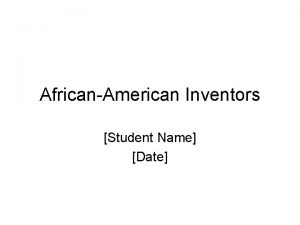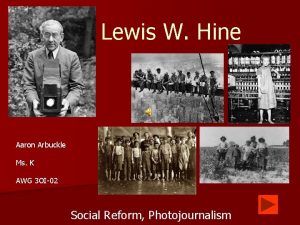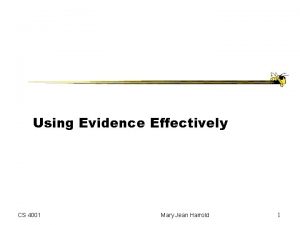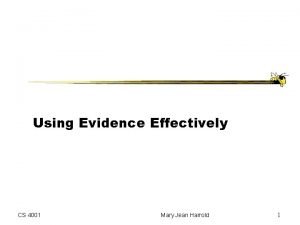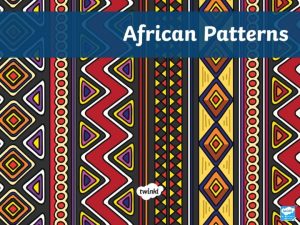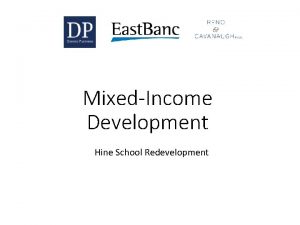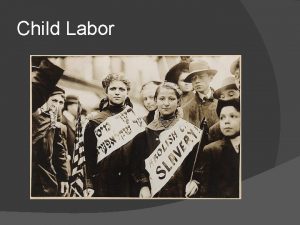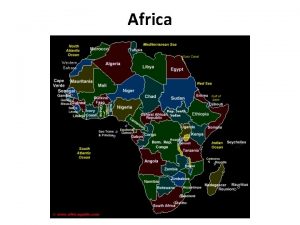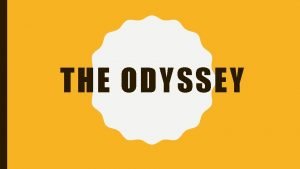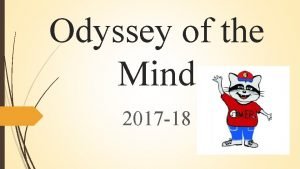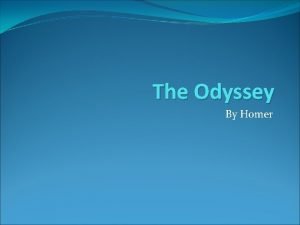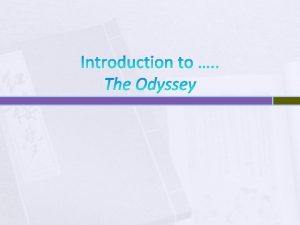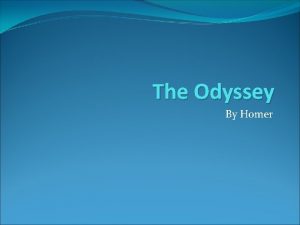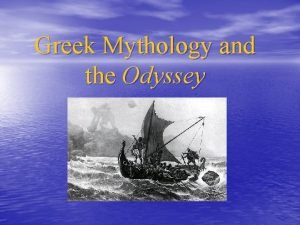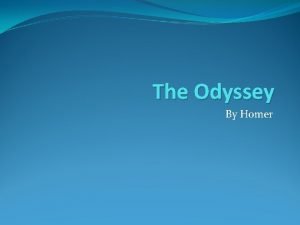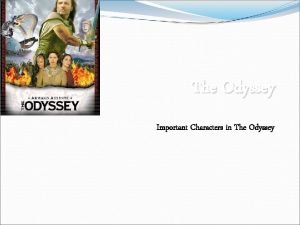Africa The AfricanAmerican Odyssey SECOND EDITION Hine Harrold






















- Slides: 22

Africa The African-American Odyssey SECOND EDITION Hine ~ Harrold Part I Becoming African CHAPTER 1 Africa

I. A Huge and Diverse Land • Second largest continent in the world • From North to South – A succession of climatic zones – Desert, savannah, rain forest, mountain ranges

Trade and Conquest • Nubia – Egyptian colony ~ copper and gold deposits • Kush – Nubian independent kingdom • Meroe – Africa’s first industrial center – Iron deposits and geographic location • Axum – First Christian state in sub-Saharan Africa • Influenced by Hebrew culture

IV. West Africa • Physically, ethnically, and culturally diverse – Savannah and forest • • Home to a variety of cultures and languages Divided labor by gender Lived in villages composed of extended families Accorded semi-divine status to their kings Cultivated crops Tended domesticated animals Produced iron tools and weapons – Trade with North Africa • Essential part of the economy and kingdoms

Ghana • First known kingdom in the western Sudan – Founded between fourth and eight centuries CE – Warfare and iron weapons created an empire • Commerce – Camel caravans – Imported silk, cotton, glass beads, horses, mirrors, dates, and salt – Exported pepper, slaves, and gold mined in another region and taxed passing through – Commerce and religion destroyed Ghana in the twelfth century

Empire of Mali, 1230 -1468 • Battle of Kirina – Sundiata • Reigned 1210 -1260 • Led the Mandinka to victory over the Sosso in 1235 • Larger than Ghana – Greater rainfall – More crops – Control of Wangara gold mines – Population reaches 8 million

Mali (cont. ) • Commerce, bureaucracy and scholarship – Most merchants and rulers • Moslems by 1210 s • Converted to gain stature among Arab states • Timbuktu – Major trading hub • gold, slaves, and salt – Center of Islamic learning ~ thirteenth century – 150 Islamic schools – Cosmopolitan community • Religious and ethnic toleration common

Mali (cont. ) • Mansa Musa – Reigned 1312 -1337 – Pilgrimage across Africa to Mecca in Arabia – Empire declined with Musa’s death

Empire of Songhai, 1461 -1591 • The last and largest of the Sudanese empires – Sunni Ali • Reigned 1464 -1492 • Conquered people pay tribute • Generally run their own affairs

Empire of Songhai, 1461 -1591 – Askia Muhammad Toure • Reigned 1492 -1528 • Devout Moslem • Expanded empire – Centralized administration of the empire – Substituted taxation for tribute – Established bureaucratic trade regulation – Used his power to spread Islam within the empire

Songhai (cont. ) • Askia Daud – Reigned 1549 -1582 – Songhai failed to adapt to changing political atmosphere • • • Portuguese establish trading centers along the Guinea coast Arab rulers of North Africa threatened with loss of trade King of Morocco sent mercenaries to Songhai in 1591 Defeat the Songhai army and empire falls apart When Moroccans leave the region West Africa without a government powerful enough to stop the Portuguese

West African Forest Region • Cultural diversification – Patchwork of diverse ethnic groups • variety of languages and traditions – Small powerful kingdoms • Benin City – Little influenced by Islam or Christianity – Trading center » Gold, peppers, ivory, and slaves » By seventeenth century dependent on slave trade

V. Kongo and Angola • Kongo-Angola Region – Trade with the interior of the continent – Late fifteenth century rulers more welcoming of Portuguese • Nzinga Mbemba tried to convert kingdom to Christianity (See page 17) • Unrest, Portuguese greed, and slave trade – Destroy the kingdom

VI. West African Society and Culture • Most were farmers – Villages and hamlets • Extended families and clans – Some patrilineal others matrilineal • Produced cotton for clothes • Variety of crops – Millet, rice, sorghum, peas, okra, watermelons – Yams replaced grains in the forest regions

Women • Served as government officials in ancient Ghana – Enslaved women in the royal court of Dahomey also held official posts – West African women could have male friends apart from relatives

Class and Slavery • Royalty – Landed nobles, warriors, peasants and bureaucrats – Lower classes • artisans and labors blacksmiths, butchers, tanners, and oral historians called griots • Slavery – Common in West Africa • More so in the savannah region than in forest areas – Variety of forms • Not necessarily a permanent condition

Class and Slavery (cont. ) – Islamic regions • Masters obligated for slaves’ religious well-being – Non-Islamic regions children of slaves • Legal rights – Not to be sold from the land they occupied – Slaves in royal courts or in the armies • Own property and often held power over free people – Agricultural slaves • Less fortunate – Work and privilege for second and third generation offspring similar to free people

Religion • Fifteenth century West Africa – Islam • Introduced by Arab traders – More prevalent in cosmopolitan areas – The religion of merchants and bureaucrats – Fostered learning and building mosques in West African cities

Religion – Indigenous religions • Strongest in forest areas – Polytheistic and animistic – One creator god and a host of lesser gods, – Saw the force of God in all things » Ancestor worship, magicians, and oracles » Ceremonies and animal sacrifices

Art and Music • Related to religious practices • Excelled in woodcarving and sculpture – Wooden masks and terra-cotta figurines • used in funerals, medical practices, and in coming-of -age ceremonies • Musical instruments – drums, xylophones, bells, flutes, and mbanzas

Literature • Oral histories, poetry, and tales – Specially trained poets and musicians • served kings and nobles – Views of common people represented also • Prose tales – Human characters » Tales about creation, success, romance • Animal characters – “Trickster tales” – Entertain and teach lessons

VII. Conclusion The history of many African Americans begins in West Africa. Family organization, work habits, language, religious beliefs, legends, and more came to America along with slave trade.
 Africanamerican inventors
Africanamerican inventors Lewis w hine biography
Lewis w hine biography Mary jean harrold
Mary jean harrold Mary jean harrold
Mary jean harrold Africa is the second largest continent
Africa is the second largest continent 27 miles per gallon into kilometers per liter
27 miles per gallon into kilometers per liter Advanced word power second edition answers
Advanced word power second edition answers Clear thinking and writing
Clear thinking and writing Wechsler individual achievement test second edition
Wechsler individual achievement test second edition In company second edition
In company second edition Accounting principles second canadian edition
Accounting principles second canadian edition Accounting principles second canadian edition
Accounting principles second canadian edition Ten steps advanced reading answer key
Ten steps advanced reading answer key Accounting principles second canadian edition
Accounting principles second canadian edition Kaufman test of educational achievement
Kaufman test of educational achievement Organic chemistry
Organic chemistry Accounting principles second canadian edition
Accounting principles second canadian edition Introduction to algorithms second edition
Introduction to algorithms second edition Mis chapter 6
Mis chapter 6 Using mis (10th edition)
Using mis (10th edition) Chụp tư thế worms-breton
Chụp tư thế worms-breton ưu thế lai là gì
ưu thế lai là gì Tư thế ngồi viết
Tư thế ngồi viết
